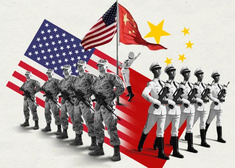
Phantom War: USA vs China (Who would win?)
Last updated: Tuesday February 27th, 2024
Report this blog
How it works
In order to determine who would win this war, we have to look beyond just military capability. We need to look at economic factors, geography, allies in the Indo-Pacific and North America etc. That being said, we need to dive deeper into the military aspect of it, examining aircraft, naval vessels, armored vehicles and more. And not just the raw numbers. How effective are these vehicles, how old are they, how expensive are they. This and more will be discussed. So lets explain how this blog will work!
Firstly, with help from my friend ChatGPT, I'll be giving each metric a score from 1-10 on how important it is in warfare. Then, whichever country outperforms the other will get that amount of points. Ready? Let's dive in!
Population/Demographics

Weighted Score: 8
Population can be a big factor in determining who can win a war. The larger the population, the more people you can enlist and put to work on military production among other things. And it goes without saying but China dominates the U.S. when it comes to population with 1.4 billion people compared to America's 340 million. But this includes children, the elderly, and people who may not be useful as soldiers and/or laborers. So we can narrow this down even more by just looking at manpower or the number of able-bodied people. Once again, however, China comes out on top with around 760 million able-bodied people to America's 150 million. Either way, China comes out on top.
Winner: China
# of Soldiers
Weighted Score: 9
The number of soldiers is probably one of the biggest factors in a war. While it's important to keep in mind that more soldiers don't equal a better chance of winning, it certainly does give you a leg up. It's also important to remember that numerous things contribute to effective soldiers. Morale, equipment, and training (among others). But once again, China beats America at the numbers game, with around 2 million active personnel to America's 1.33 million. Something interesting about this though is the percentage of the population that is actively serving. America has 3 times more soldiers serving in proportion to the population. Furthermore, the United States has more soldiers in Reserve! However, China has around 600,000 paramilitary forces. It goes without saying that America has none. But because of this odd dynamic of China winning the numbers game but America winning the % game:
Winner: Draw (China: 5, U.S.: 4)
Defense Budget
Weighted Score: 7
Obviously, America beats China (and everybody) at military spending. And it's not even close. America spends a whopping $830 billion on its military! China spends the second most of any country, but it's much less, at around $230 billion. However, in a war, your military spending would increase, and when it comes to purchasing power China beats the United States with $24 trillion. America has just under that at $21 trillion. While on this topic however, it's important to note that China has rapidly increased its military budget, investing in new technology as much of its current military is as outdated as it is from the Soviet-era (which I'll expand on later)
Winner: United States
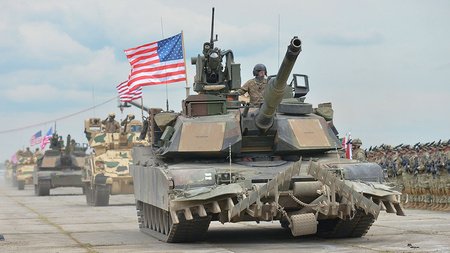
Something worth noting here is that America has around $31 trillion in debt and around 2% of it is held by Chinese investors.
Air Power
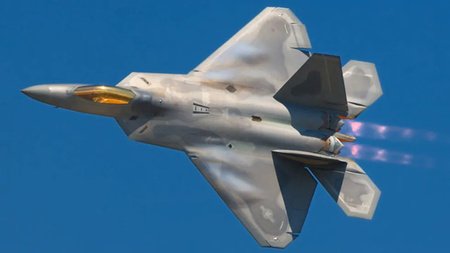
Especially in modern times, air superiority is crucial to winning a war. Case in point, two current conflicts, the Russian Invasion of Ukraine and the Israel-Hamas war, have seen heavy action in the air, not just with jets. but increasingly drones and short-range missiles. When it comes to sheer numbers of aircraft, America has around 13,000, while China only has 3,300. But they'll be graded on the specifics, not the number at large.
Weighted Score: 9
In terms of the number of fighter jets, the U.S. has the advantage over China with around 1,850 to China's 1,200. Furthermore (take note of this), a lot of China's jets are outdated and from the Soviet era. Fighter jets directly impact a country's ability to have air superiority and give them a better chance to conduct strikes on the other military.
Winner: United States
Weighted Score: 7
Helicopters have a wide variety of uses, from supplying troops, medical evacuations, air reconnaissance, and transporting troops behind enemy lines, among other things. America has around 5,700 helicopters to China's 900. Helicopters can also be used for attack purposes and can help establish air superiority. America has about 1,000 attack helicopters, whereas China only has around 300.
Winner: United States
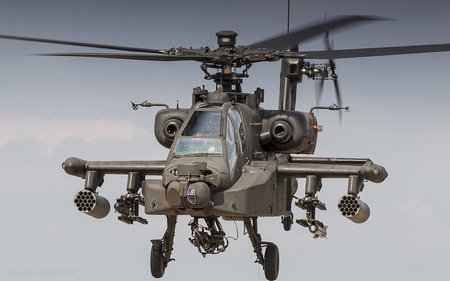
Army
Weighted Score: 8
Assuming that the conflict even gets to a ground offensive, tanks play a crucial role in ground operations. China has slightly more tanks, with their total coming in at around 5,000. America has slightly less at about 4,600. Yet again though, many of China's tanks are outdated, and many of them in that number aren't even operational. Because of that:
Winner: United States
Weighted Score: 7
Armored Vehicles are the Army equivalent of helicopters. They can be used for reconnaissance, troop transport, light artillery and combat. In terms of the numbers, the United States has 360,000 armored vehicles! That's even more impressive when you consider China has the second most of any country at about 174,000. And as usual, some of the Chinese vehicles are out of commission and/or outdated.
Winner: United States

Weighted Score: 8
Artillery has always played a crucial part in warfare. From cannons to rockets, having an advantage when it comes to artillery can make a big difference. China has about 3,800 pieces of self-propelled artillery (artillery that can move on its own), to America's 1,500. China also has 1,400 pieces of towed artillery (artillery that can't move on its own) to America's 1,200. Even though much of China's technology is outdated, the difference in numbers is too stark to ignore.
Winner: China
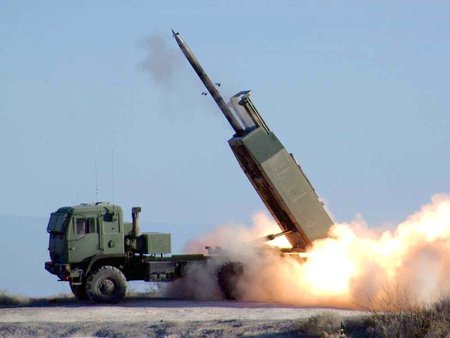
Weighted Score: 7
Mobile Rocket Projectors are a kind of artillery? Anyway, we're counting them as separate and China easily wins this category with just over 3,000 to America's 700. I'm only going to mention China's outdated machinery one more time, this time because a decent portion of China's stockpile is from the 1960s-70s, imported from the Soviet Union.
Winner: China
In the Navy!
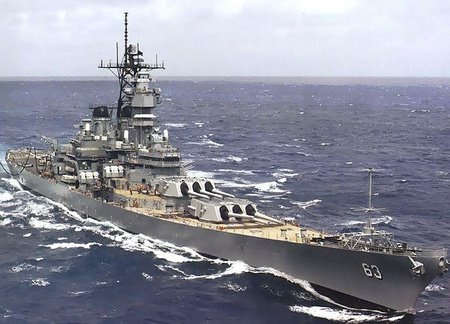
By sheer number of vessels, China outdoes the United States with a total of 730 ships to America's 472. But as always, we'll break up vessels to talk about Aircraft carriers, corvettes, frigates, submarines and even talk about mine warfare.
Weighted Score: 9
Since World War II, America has had a monopoly on Aircraft carriers. China ties the second most with 2. America has 11! Aircraft carriers are the backbone of naval warfare, and also play a key part in air combat, particularly since the U.S. and China are so far away (more on that later). Apart from that, they can provide security for other naval vessels, and recover fallen aircraft and they usually serve as the headquarters of admirals and other top navy officials. And because of America's dominating performance, they easily win this category.
Winner: United States
*(Additonally, America has 9 Helo carriers (aircraft carriers for helicopters) to China's 3)*

Weighted Score: 8
There are numerous different types of vessels, all of which have different purposes and capabilities. Destroyers are very versatile, with capabilities ranging from surface to air, to anti-aircraft, to anti-submarine, basically anything that involves blowing the enemy's stuff up. America has 75 destroyers, to China's 49. As with the submarines, China has been increasing its production of these vessels, but they're still far behind the United States.
Winner: United States
Weighted Score: 7
If destroyers are the Swiss army knife of offensive naval warfare, frigates are the Swiss army knife of defensive naval warfare. They're most commonly used as escorts for larger fleets but are also equipped with surface-to-air missiles and torpedoes. Surprisingly, America has no frigates but does have numerous other vessels with similar capabilities. China has 42.
Winner: China
Corvettes are the smaller cousin of frigates and are generally used for coastal defense. China has 72 and America has 23.
Weighted Score: 8
Submarines continue to be more and more important in Naval warfare. One thing they can do, that no other can is be undetectable underwater and infiltrate enemy lines. China has been rapidly building up its submarine fleet, but America still has a slight edge over them with 64 to China's 61.
Winner: Draw (U.S.:4, China: 4)

Weighted Score: 5
It's a bit of a statement that China is ahead in defensive naval technology and America is ahead in offensive naval technology, and that pattern continues with mine warfare. Any vessel that is dedicated strictly to placing, detecting, and/or clearing mines will be counted. Mines are generally used for coastal defense but can be used for attack if properly executed. China beats the United States 36 to their 5.
Winner: China
Geography/Natural Resources
Weighted Score: 9
Drill, baby, drill! Turns out this is more important than artillery or helicopters. Oil production is not only a stable of the Chinese and American economies (for now), but it is crucial for fueling all the toys of war, from tanks to vessels and beyond. Of course, imports of oil would increase during a conflict, but for these purposes, we're just counting domestic oil production (we'll discuss alliances and trade below). America produces 18 million barrels of oil a year, whereas China produces around 4.7 million barrels.
Winner: United States
Weighted Score: 7
Natural gas can also be important, both as a backup to oil, and it can also help generate power domestically, therefore conserving oil. America produces just over 967 billion barrels a year, while China produces around 180 billion barrels. America leads the world in domestic production (for now) for both oil and natural gas, which could be crucial for fueling the American war machine. However, it's also important to discuss things like consumption and reserves.
Winner: United States

Expanding on the fuel aspect, there are two other metrics to consider when it comes to natural gas and oil. First of all, is the amount that both countries have in reserve. This could be crucial, as this would likely be tapped many times to sustain fuel supplies. China has close to 26 billion barrels of oil in reserve, which is a lot until you consider the U.S. has nearly double that at 50 billion barrels. For natural gas, it's the same story. China has 6.6 trillion barrels of natural gas in reserve, while the U.S. has closer to 13.1 trillion barrels (give or take a few billion). While this won't be scored, it is just an important thing to remember.
The second this to note is consumption (mostly civilian). This is important because it helps you understand how much the country uses, and the more usage, the more that may be a challenge, as it may need to be reduced. America consumes around 20.5 million barrels of oil a year and 857 trillion barrels of natural gas. China consumes 14 million barrels of oil and 306 trillion barrels of natural gas. Something you may notice is neither country is self-sufficient, which I'll get to later.
Weighted Score: 8
Coastline can be both a blessing and a curse when it comes to war. A blessing because it can provide a major boost to naval strategy and potential areas for naval installations, as well as things like maritime trade. At the same time, however, a longer coastline means more coast to guard, and more areas that are vulnerable to things like smuggling. The U.S. has a longer total coast, but much of it is on the Atlantic side, giving China the win on this one. But because of the potential drawbacks discussed, this one will be called a draw.
Winner: Draw (U.S.: 4, China: 4)
Alliances

Weighted Score: 7/10
China only has one mutual defense agreement, one with North Korea. However, the United States not only has the assistance of NATO, but additionally boasts that relationship with Australia, New Zealand, the Philippines, Thailand, Japan, South Korea, and many more. Of course the strengths of these countries varies, as would their usefulness to the United States. However, America easily wins this category.
Winner: United States
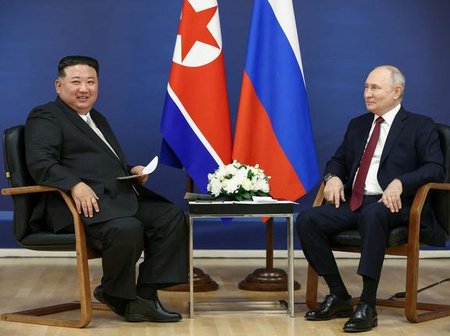
This will be one of the longest sections, as its complicatedness requires LOTS of explanation. We will begin with Chinese allies and their strengths. As previously mentioned, China has only one mutual defense treaty, with North Korea. While North Korea has considerable military capabilities (which may be discussed in a future Phantom War), America's NATO and non-NATO allies combined have significantly more military capabilities. However, there is more to allies than just guns.
Many things play a role in winning a war. As Russia can tell you, if the world is against you, it certainly doesn't help. The point is, in a war, you expect your economy to take a hit, but if you have strong economic relations with other countries, it can soften the blow.
Weighted Score: 8/10
As previously mentioned, America has many allies that are close to China, and aside from NATO, most of them are in the Indo-Pacific region. If you have allies close to your enemy, it can impact your stadegy in a major way. It can make it easier to launch strikes, offer staging grounds for a land invasion, and many other crucial aspects of a war. Given the number of American allies that are close to China, and the number of allies in the Indo-Pacific region, America wins this category. It's also worth mentioning, that China doesn't have any allies on the American continents.
Winner: United States
Weighted Score: 7/10
America has strong economic relationships with numerous countries in Europe and the Americas, but China has been making inroads, especially in Central and South America in recent years. However, many of these countries would be forced to choose between the two warring countries. Europe would likely stick with its historical ally America, while the Americas might be a bit more up in the air.

Another key region is the Middle East, which could be critical to the energy market. Some of the big players in the region lean towards America, like Israel, Jordan and Turkey (because of NATO). Others are more aligned with China like Syria and Iran. Many countries continue to have changing and/or mixed loyalties like Saudi Arabia and Egypt. But because of partnerships with European countries, America has the advantage.
Winner: United States
Weighted Score: 20/10
The final metric we will discuss is the strength of major allies. In the numbers game, America easily wins. Some allies may be more inclined to simply offer financial support, while some others might be drawn into the conflict, either willingly or not willingly. Firstly, there's NATO. If America and China went to war, it would also be a war between every NATO country and China. In Article V of the North Atlantic Treaty, it states that "an attack on any member country is an attack on all" member countries. And NATO has some powerful military's like Germany, France, the United Kingdom, Canada, Italy and others. Other powerful countries like Japan, South Korea, and Australia may join the fight. Taiwan would also likely become involved, and would undoubtedly side with America. Countries like North Korea and maybe Russia might intervene on the side of China, which would even the field a bit more. But because of NATO, America has the slight advantage.
Winner: United States
WINNER
There is obviously much more to winning a war then what was discussed here. I could go on for hours about the importance of Taiwan alone. But based strictly on the metrics, the winner is by a score of 125-48 is:
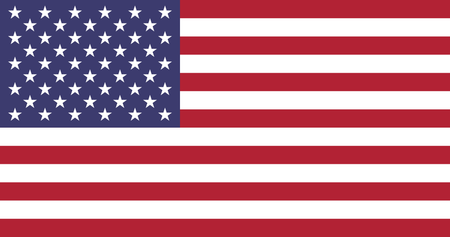
I hope you enjoyed. This took me a while to make, but it was definitely a lot of fun. Leave a comment on which Phantom war you want to see next:
Russia vs United States
Pakistan vs India
Saudi Arabia vs Iran

The two things that may keep me out of active service are
1. I have a recurring knee issue in one leg, after severely straining both quad tendons in 2021.
2. New Zealand doesn't exactly have a huge, up-to-date military like America. Although the Luxon administration may try to change that
At least you could see China putting up a good fight, Russia isn't even getting close. Plus I see way to many articles and videos about the US v Russia, almost to the point where it's getting annoying
Saudi Arabia and Iran on the other hand seem a lot more evenly matched, and I haven't seen a lot of comparisons about that
Good blog by the way :)
Or Monaco and Lesotho?
Or Bermuda and Pitcairn?
Or....well you get the idea!